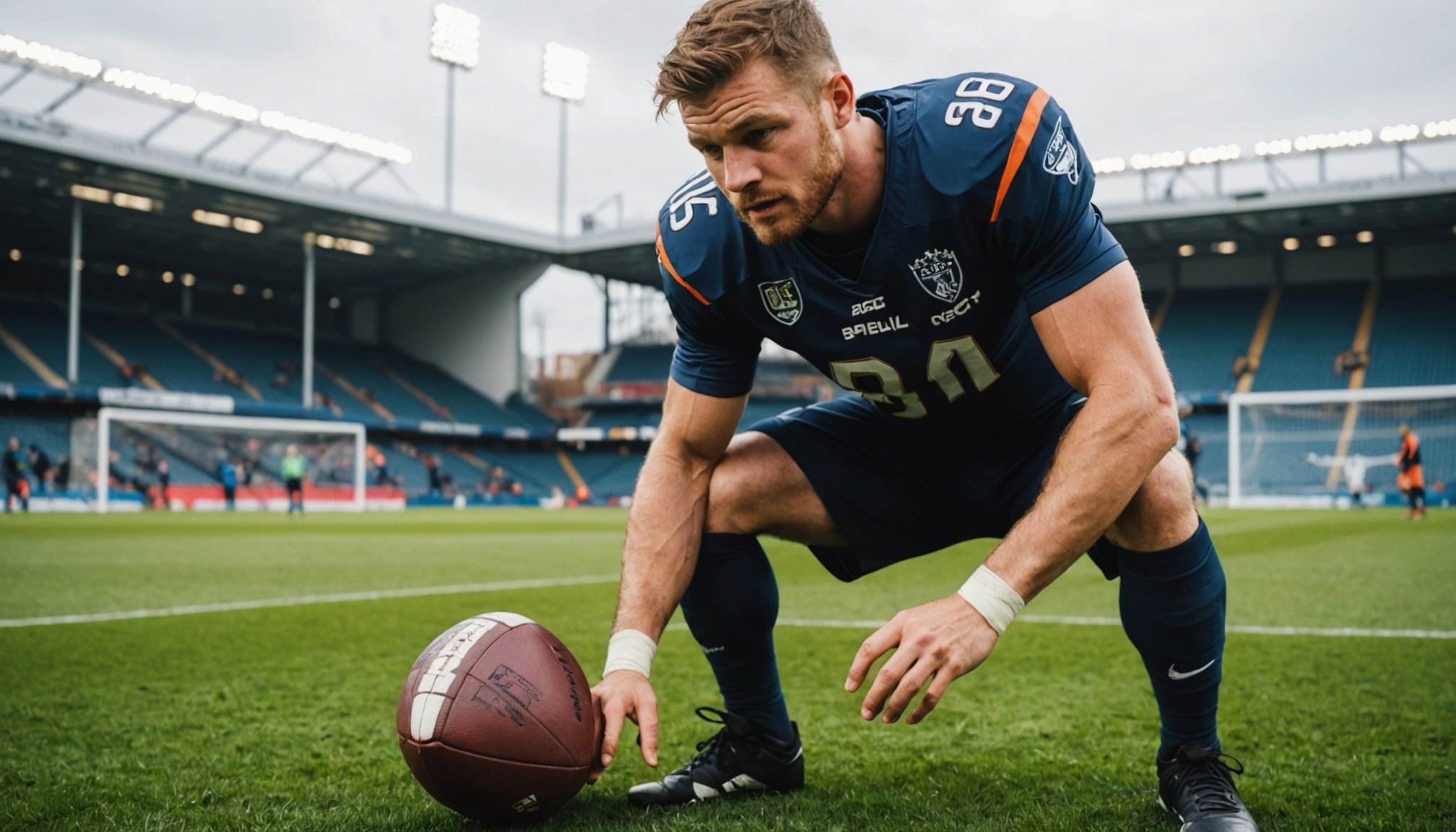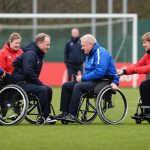Optimizing Post-Match Recovery for Football Players Aged 30 and Above
As football players age, their bodies undergo significant changes that can impact their performance and recovery. For players aged 30 and above, effective post-match recovery strategies are crucial to maintain physical performance, reduce muscle soreness, and prevent long-term damage. Here’s a comprehensive guide to help these athletes optimize their recovery.
Understanding the Challenges of Aging in Football
As players enter their 30s, several physiological changes occur that can affect their recovery and performance. Here are some key challenges:
Also read : Maximizing Performance: Innovative Strategies for Football Teams to Enhance Pre-Match Warm-Up Routines
Decreased Muscle Mass and Strength
Aging is associated with a natural decline in muscle mass and strength, a condition known as sarcopenia. This can make recovery from intense physical activity more challenging[4].
Reduced Flexibility and Mobility
Older athletes often experience a decrease in flexibility and mobility, which can increase the risk of injury and prolong recovery times.
Additional reading : Unlocking Mental Mastery: Top Strategies for Footballers to Boost Cognitive Skills on the Field
Changes in Metabolic Rate
The metabolic rate slows down with age, affecting how the body processes nutrients and recovers from exercise.
Immediate Post-Match Recovery Strategies
The immediate post-match period is critical for initiating the recovery process. Here are some strategies that football players aged 30 and above can adopt:
Active Recovery
Active recovery involves light physical activity to promote blood flow and aid in the removal of waste products from the muscles. This can include a gentle jog, cycling, or swimming.
- **Light Jogging**: 10-15 minutes of light jogging to keep the muscles active without exerting too much stress.
- **Cycling**: Stationary cycling or using a recumbent bike for 15-20 minutes.
- **Swimming**: Gentle swimming laps or water aerobics for 20 minutes.
Cold Water Immersion
Cold water immersion (CWI) is a popular recovery method that involves soaking in cold water to reduce muscle soreness and inflammation.
- **Temperature**: Water should be between 10-15°C (50-59°F).
- **Duration**: 10-15 minutes.
- **Frequency**: Immediately after the match and possibly the next day if muscle soreness persists.
Rehydration and Nutrition
Proper rehydration and nutrition are essential for replenishing energy stores and supporting muscle repair.
- **Water Intake**: Aim to drink at least 16-20 ounces of water for every pound of body weight lost during the match.
- **Protein Intake**: Consume 20-30 grams of protein within 30-60 minutes post-match to support muscle repair.
- **Carbohydrates**: Include complex carbohydrates to replenish glycogen stores.
Long-Term Recovery Strategies
While immediate post-match recovery is crucial, long-term strategies are equally important for sustained performance and overall health.
Sleep and Rest
Sleep is a critical component of recovery, as it allows the body to repair and adapt to the physical demands of football.
- **Duration**: Aim for 7-9 hours of sleep each night.
- **Consistency**: Maintain a consistent sleep schedule to regulate the body’s internal clock.
Strength and Conditioning Training
Tailored strength and conditioning programs can help mitigate the effects of aging on muscle mass and strength.
- **Resistance Training**: Focus on exercises that target major muscle groups, such as squats, deadlifts, and bench presses.
- **Flexibility and Mobility**: Incorporate stretching and mobility exercises to maintain flexibility.
Injury Prevention and Management
Older athletes are more prone to injuries, so proactive measures are necessary.
“`plaintext
- Warm-Up and Cool-Down: Ensure thorough warm-up and cool-down routines to prevent muscle strains.
- Regular Check-Ups: Regular medical check-ups can help identify potential issues early.
- Data-Driven Approaches: Utilize data analytics, as discussed by Damien Comolli, to monitor player health and prevent injuries[4].
Table: Comparing Recovery Methods
Here is a comparative table of different recovery methods, highlighting their benefits and considerations:
| Recovery Method | Benefits | Considerations |
|---|---|---|
| Active Recovery | Promotes blood flow, aids in waste removal | May not be suitable for severe muscle soreness |
| Cold Water Immersion | Reduces muscle soreness, inflammation | Requires access to cold water facilities; potential cardiovascular risks |
| Rehydration and Nutrition | Replenishes energy stores, supports muscle repair | Requires careful planning to ensure adequate nutrient intake |
| Sleep and Rest | Essential for muscle repair, adaptation | Consistency is key; poor sleep can negate recovery efforts |
| Strength and Conditioning | Maintains muscle mass, strength | Requires professional guidance to avoid overtraining |
| Injury Prevention and Management | Reduces injury risk, early identification of issues | Requires regular medical check-ups and data-driven approaches |
Practical Insights and Actionable Advice
Here are some practical tips and advice from experts and studies:
Expert Advice
“Active recovery is crucial for older athletes. It helps in maintaining muscle function and reducing the risk of injury,” says Sabri Lamouchi, a professional coach[2].
Studies and Research
A meta-analysis published in the Journal of Strength and Conditioning Research highlighted the effectiveness of cold water immersion in reducing muscle soreness and improving physical performance post-exercise[6].
Recovery for football players aged 30 and above is a multifaceted process that requires a combination of immediate and long-term strategies. By incorporating active recovery, cold water immersion, proper rehydration and nutrition, adequate sleep, and tailored strength and conditioning training, these athletes can optimize their recovery, maintain performance, and extend their careers.
Additional Recommendations
- Monitor and Adjust: Continuously monitor recovery strategies and adjust them based on individual needs and responses.
- Seek Professional Guidance: Consult with sports scientists, coaches, and medical professionals to tailor recovery plans.
- Stay Hydrated: Drink water regularly throughout the day, not just post-match.
- Balance Training: Ensure training programs are balanced to avoid overtraining and prevent injuries.
By following these guidelines and staying committed to a well-structured recovery plan, football players in their 30s can continue to perform at a high level and enjoy a longer, healthier career in the sport.











